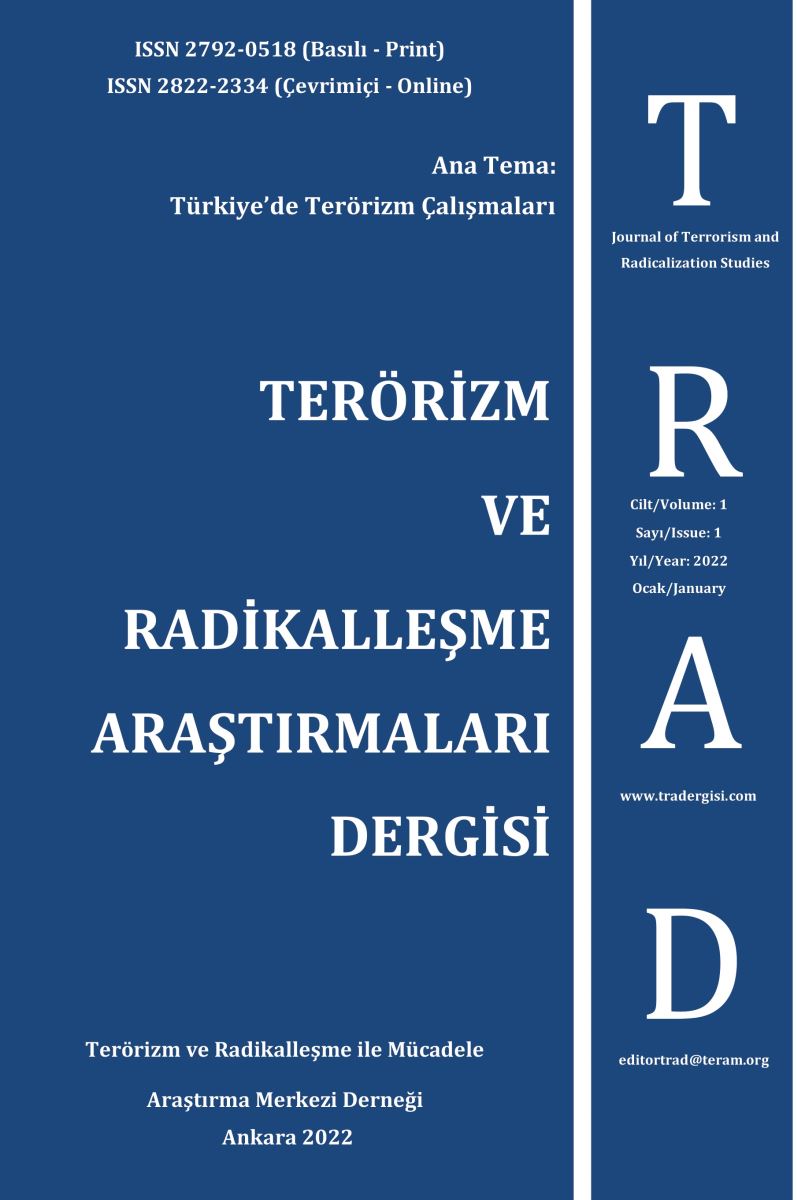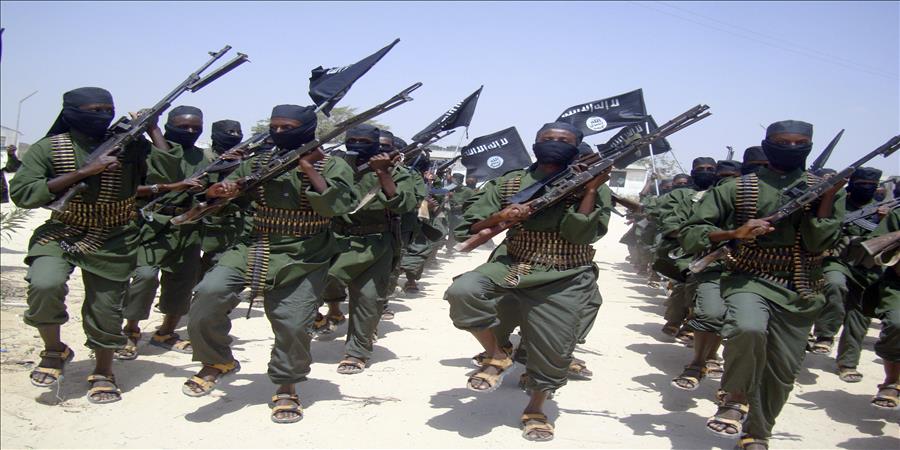
- Nazlıcan KAVUKCU
- 04 Eylül 2020
- PDF İndir
- Tweetle
Al Qaeda Factor on the Strengthening of Al-Shabaab in the Post-2008 Period[i]
Nazlıcan Kavukcu and Hatice Varol*
Abstract
This research has been aiming to clarify the effects of Al-Qaeda on the evaluation of the Al-Shabab terrorist organization after 2008. The advantages and disadvantages of this alliance to the al-Shabab terrorist organization have been discussed. It is seen that this organization, which continues to grow stronger under the escort of Al Qaeda, negatively affects the development of the region. In the study, how the developing foreign network is reflected in the policies of the organization has been examined.
Key Words: Al-Qaeda, Al-Shabab, Network, Somalia, Strategy
Öz
Bu çalışma; El-Kaide’nin 2008 yılı sonrasında El-Şebab terör örgütünün dönüşümüne nasıl etki ettiğini açıklamayı amaçlamaktadır. Kurulan bu ittifakın El-Şebab terör örgütüne sağladığı avantaj ve dezavantajlar ele alınmıştır. El Kaide şemsiyesi altında güçlenmeye devam eden bu örgütün, bölgenin gelişimini olumsuz yönde etkilediği görülmektedir. Çalışmada, gelişen yurtdışı ağının, örgütün politikalarına nasıl yansıdığı incelenmiştir.
Anahtar Kelimeler: El-Kaide, El-Şebab, İletişim Ağı, Somali, Strateji
* Master Student in Turkish National Police Academy, Institution of Security Sciences, International Security Program, nazlicandasdemir@gmail.com
* Master Student in Gendarmerie and Coast Guard Academy, Institution of Security Sciences, International Security and Terrorism, hvarol28@gmail.com
Introduction
Somalia, where stability could not be achieved has entered a new era with the military coups which occurred in 1969 and 1991. The Al-Shabaab terrorist organization, which is formed and became known from the beginning of the 21st century, has been considerably strengthened in Africa by taking advantage of the power gap last 20 recent years. The organization, which initially concentrated terrorist attacks in Somalia, has expanded the scope and scale of its attacks as its area of influence expanded. The organization, which carries its effectiveness to higher levels with the support it receives from outside, has an extremely advanced network and recognition now. Today, Al-Shabaab is an important security threat not only for Somalia but also for Ethiopia, Eritrea, and Uganda.
The organization has started to promote its relations with Al-Qaeda, which has links to various terrorist groups in different regions since 2008. In this study, this development, which is extremely vital for the countries of the region is evaluated in different ways. In the first part, it is touched upon that the reasons of why it is hard to maintain the stability in Somalia and how Al-Shabaab emerged.
In the second part, the situation of the Al-Shabaab terrorist organization before 2008, its turning points, and its relations with Al-Qaeda are explained. Also, it is focused on the changing structure and strategy of the organization. Technological developments, changes in its ideology, and system are mentioned.
In the third part, financial resources of the organization and the way to find them are stressed. The impact of technological developments on the organization's ability to find financing, and the place it has gained at the international level are examined. In general, secondary resources have been used in the study. Articles, book chapters, academic publications, web sources, official documents, and statistical data have been benefited.
Historical Perspective of Somalia
Africa, one of the important regions on world politics, has always had difficulties in maintaining a stable state structure. Of course, many reasons can be listed in this context, but the main thing underlying this situation is the geographical conditions. As all of us know, Africa is a region which has severe climatic conditions. Its geographical structure, which makes the settled life difficult, and unfavorable and limited agricultural areas caused by the tropical climate have caused the population to concentrate on certain regions. The regions that are geographically favorable and densely populated make up 2% of the continent, and half of the African population lives in this area. Therefore, it has been difficult to establish political authority in 98% of the continent where population density is very rare (ŞAHİN, 2013). So, in early times city-states were common.
Starting with the colonial era, Africa became a center of slave trading and raw materials. Many Western states such as Portugal, Spain, France, Germany, Belgium, and Italy divided up the continent, which they used as a market, among themselves at the 1884-1885 Berlin Conference. These countries, which have different management methods, established these systems in the regions they dominated. However, the different dynamics of the countries in the region sometimes made it difficult to settle these practices.
Somalia is one of the two gates that allow the Gulf of Aden to enter the Indian Ocean. Looking at Somalia, it appears that there was no central political authority established before the colonization period ended. During that era, Somalia was not ruled by any authority. Generally, there were clans and non-state societies. Society had divided into two main clans, Samaale and Sab, according to they were settled or nomadic. There was no chief or leader in any Somali clans. However, there were members function as an ambassador. Together with these members, other prominent figures of the clans had been formed an assembly and making decisions in this way. (ŞAHİN, 2013) Therefore, they did not have a sense of loyalty or belonging to a central authority.
By the 1900s, after the opening of the Suez Canal, the interest of the western colonial powers in the region had started to increase. Somalia had become the main trade route with the Red Sea, India and East Asia. When they became dominant over the country, Somalia was divided into five areas. This division played an important role in shaping the country for many years.
Britain and Italy were dominant over the country until the Second World War. In 1940, Italy declared war on England, directed its troops to British Somalia, and forced the British forces to withdraw. Britain started operations against Italian Somalia in 1941, and in a short time, it took a large part of Italian Somalia under its control. The Ogaden region was returned to Ethiopia. Until 1950, both Somali areas were under British rule.
In 1959, the UN General Assembly decided to end the Italian political tutelage in Somalia on 1 July 1960. Thereupon, Italian and British Somali declared their independence and established the Somali Republic. However the former administrative structures were different. For instance, The legal and judicial systems to which they were affiliated, their trade patterns and rules, and even the language they spoke were different. This situation led to the cleavage of the country into north and south and various uprisings.
Mohammad Said Barre, a senior soldier in the former Italian Somali, carried out a coup in the country in 1969 and he declared that the new order he was going to establish was "scientific socialism". He made lots of reforms such as generalizing literacy education, encouraging nomadic society to settled life, improvements in agriculture. However, with the adoption of socialism, the country was secularized, and this was not welcomed by Islamists. Also, in 1977-1978 after the Ogaden War lost, when Said Barre had lost his former strength and reputation, serious economic problems arose. Within this atmosphere, some radical groups occurred such as Somali Salvation Democratic Front (SSDF) and Somali National Movement (SNM). In order to stop these movements, conflicts started in the north with the increase of state violence. In 1989, with the formation of new movements against the state in the south and the center, it spread to the whole country. The United Somali Congress (USC) from the Hawiye clan and the Somali Patriotic Movement (SPM) of the Darood / Ogaden clan emerged. (ŞAHİN, 2013) Also, the Islamists established the Al Ittihad Al Islamiya organization in 1984, which formed the roots of al-Shabaab. (Stanford) The whole process worsened when Said Barre left the country in 1991, and the government dissolved. The terrorist organizations, which took advantage of the security gap, became active with the support of Al-Qaeda, who has been in the region since 1988.
Background of Al-Shabaab
Al Ittihad Al Islamiya (AIAI) organization started its first attacks in 1992. The Somali official government had to agree with Ethiopia to stop the activities of the organization and demanded intervention. Upon this, the Ethiopian army entered Somalia in 1997 and inflict a heavy blow to the organization (STANFORD).
In the early 2000s, with the establishment of the Islamic Courts Union under the leadership of Sheikh Ahmed as a sequent of The Islamic Union, the first step of the Al-Shabaab has been taken.[1] The military pillar of the organization which seeks political aims was called “Mujahedeen Youth Movement – Mujahidin Al-Shabaab”. Its ideology can typically describe as a brand of Salafism and Wahhabism that supports takfir, the ex-communication of apostates or unbelievers (COUNTER EXTREMISM). Though it has stated many goals in the past, the group fights first and foremost to create a fundamentalist Islamic state in the Horn of Africa which involves Kenya, Ethiopia, and Djibouti. (ABİSAİD) Currently, the organization has broadened its influence through Mogadishu and South-Central Somalia too.
Since the Al-Shabaab has established under the leadership of Aden Hashi Farah Aero, there have been several initiatives to stop their actions and maintain peace. Transnational Federal Government (TFG) had created as a ruling body. TFG was composed of the representatives of the biggest clans of Somalia. However, it could not maintain an influence against Al-Shabaab’s actions neither inside nor outside of the country. Therefore, in 2006, TGF requested intervention from neighboring countries to quell tension.
It was a breakpoint for Al-Shabaab. After the Ethiopian-led intervention, the organization has received a blow and changed its ideology and strategy. Normally it had an Islamic-based ideology but after 2006, they added nationalism to on it. Because, Islam was not an uppermost factor anymore, but the Ethiopian opposition was. So that, they tended to nationalist ideology besides Islam. It led to ensure more volunteer participation at the organization. Additionally, their strategy has changed and they adopted an asymmetric operational strategy. They began a campaign of guerilla raids bombings and assassination attempts against Ethiopian forces.
Throughout 2007 and 2008, using hit-and-run attacks, improvised explosive devices (IEDs), assassinations, and bombings, Al-Shabaab stymied the Ethiopian advance into the south (Menkhaus, 2009). The Ethiopian forces had to withdraw their forces from Somalia due to the harsh geographical conditions and gave its place to the African Union Mission to Somalia (AMISOM), Uganda, and Burundi forces.
Starting from 2008, Al-Shabaab has broadened its operational area and utilized suicide attacks to target its enemies. AMISOM forces and Transnational Federal Government members have been targeted. This change has opened a new page for the organizations. While the organization initially proceeded in agreement with organizations such as Ahlu Sunna Wal Jama (ASWJ) and Hizbul-Islam, it started to fight with ASWJ in 2008 and HI in 2010. As of 2008, they have started to work to strengthen its relations with Al-Qaeda.[2] Their discourses, aims, methods are started to change in accordance with the Al-Qaeda’s principles.
Transformations with New Ally: Al-Qaeda Effect
While AQ was an organization with a hierarchical structure until 2001, it started to take on an all-channel structuring since 2001 and started to establish organic ties with organizations that advocate their own ideology in different geographies (SHULTZ and VOGT). After 2008, with Al-Qaeda alignment, Al-Shabaab has changed its perspective and ideology from local the scale to the global scale against the West.
The hybrid ideology that emerged makes little distinction between targeting local enemies and targeting global ones and have a one-size-fits-all solution-jihad’ (FARRALL, 2011). The leader staff has transformed into AQ-oriented people and mainly adapted to AQ’s ideology, and method. Both organizations have benefited from this alignment, with Al-Shabaab gaining increased legitimacy and resources and AQ core gaining a level of influence over the group (WISE, 2011). Also, with the technological developments, AS has disseminated their ideology and gain new members and fanatics by using the internet and media. Its popularity and legitimacy have increased. Previously, Al-Shabaab had a small sphere of influence, and its popularity was low. But after starting to use technology, the organization found a chance to spread its ideology all over the world not only in Africa. The citizens of the USA and some western countries joined the organization in this way. At these times, AS was giving importance to take new members who speak in English, to create a perception towards the other western-minded radicals who may attend the organization.
Al-Shabaab (AS) started to use suicide bombers against civilians and spread their attacks toward other countries in the continent. They attacked the foundations or organizations which sent humanitarian aid to region and airports. Besides, government buildings were the favourite target for them such as ministries, embassies, consulates, etc. Their first attack on the outside of Somali was in Kampala, Uganda. However, not only this, Al-Shabaab claims responsibility for several near-simultaneous bombings that kill dozens of people in sports bars in Uganda. The three coordinated blasts, which detonate just seven minutes apart, kill 76 people watching the World Cup in Kampala, Uganda (BBC NEWS, 2013). This was the first and biggest attack outside of Somalia. Following, the ties between Al-Shabaab and the AQ got strengthen.
Another big terrorist attack in Kenya was the Westgate Mall attack in 2013 and Garissa University (2015). The aim of these attacks was to change Kenyan political opinion to support the idea that withdraws the forces from Somalia by cross border attacks and seize-and-sermon operations (Seize a town and indoctrinate locals before security forces arrive.)
On the other side of the coin, Al-Shabaab suffered several difficulties. Before the Al-Qaeda connection, the rules they had established were not too heavy. However, after al-Qaeda, it could be seen that the practices of the organization are aggravated. The Sharia rules were reflected in daily life in the most severe form and the sentences were given extremely hard. (STANFORD)
This led to the formation of a group against the organization in the public. On the other hand, some of the people who had previously volunteered to support the organization moved away from the principle of volunteering over time and became fearful. Aid to Al-Shabaab was made obligatory and the people threatened. However, despite all these, the organization continued to incorporate both the youth in Somalia and people from all over the world. Thanks to the expanding network, international recognition of the organization has risen. Participation from Western countries is a sign that the organization has reached a different dimension.
The training of new members was another important issue. At this point, Al-Shabaab was supported by Al-Qaeda. Both weapons and training services were provided by Al-Qaeda. This issue was also important for Al-Qaeda because they needed to have its own system in the organization. In this way, it would be able to include operational leaders within Al-Shabaab's staff and provide dominance.
Cooperation and Funding
Technology has made an important contribution to not only recruiting new members but also collecting donations and finds the fund. Previously, the organization was collecting donations from the areas under their control. Local people were giving an amount of money as zakat and additionally, with the broader network, Somalia Diaspora and sponsors were contributing to the organization.
One of the other most important things for Al-Shabaab is financial resources. On the south side of the Somali, the port city of Kismayo was brought under control by the organization and it provided several resources to them. They rose in almost 1 million $ per month by taxing goods entering through the port.
The most important effect of being AQ-ally was reaching more donors than before. Comparing with the past, Al-Shabaab can take a donation from Arabs who want to support AQ. Because, Al-Shabaab was under the escort of AQ and this position means for donors that serving the same principle with AQ against the West. It was a crucial financial resource for the organization.
Conclusion
Al-Shabaab has become an important threat in Africa with its rise in recent years and expanded dominance. Since the day it emerged, many casualties have been reported in terrorist attacks and innocent people have been targeted. Since 2008, Al-Shabaab has been organizing more bloody and large-scale actions with the support of Al-Qaeda and has become a terrorist organization operating globally. Al-Shabaab is reportedly responsible for more than 4,000 fatalities in 2016, according to the U.S. Department of Defense-affiliated Africa Center for Strategic Studies, based on data collected from the Armed Conflict Location & Event Data Project (ACLED) (COUNTER EXTREMISM, 2020).The Al-Shabaab’s changing strategy with the alliance of Al-Qaeda does not pose a threat to Somalia alone, but it also goes beyond the borders to target the stability of the Horn of Africa (Shay 2018, 10). It is fact that the operations which were carried out in cooperation with Ethiopia and AMISOM were failed. This failure led to further strengthening of Al-Shabaab. Current situation raises concerns about the future of the region. The failure of the UN and AMISOM forces to be effective enough indicates that a new solution should be sought.
Table 1
|
Al-Shabaab Organization |
|
|
Organizational Structure |
The organization does not have a single structuring model. The structuring model for logistics and recruitment a hierarchical model, and a hub-spoke model for other deparments. |
|
Ideology of the Organization |
Salafist |
|
Attack Type |
|
|
A Form of Irregular Warfare |
Rural guerrilla warfare |
|
Area of operations |
|
|
Financial Resource |
|
|
Split from |
Islamic Courts Union |
|
Part of |
Al Qaeda |
|
What AQ partnership brings |
|
|
Opposite Groups |
|
References
ABİSAİD, M. A. (n.d.). The Al Shabaab Al-Mujahidiin: A Profile of the First Somali Terrorist Organisation. Institut für Strategie Politik Sicherheits und Wirthschaftsberatung (ISPSW).
BBC NEWS. (2013, 10 04). Retrieved 09 01, 2020, from http://www.bbc.com/news/world-africa- 24379013
COUNTER EXTREMISM. (n.d.). Retrieved 09 01, 2020, from www.counterextremism.com
COUNTER EXTREMISM. (2020). Retrieved 09 01, 2020, www.counterextremism.com
FARRALL, L. (2011). How Al-Qaeda Works: What the Organisations Subsidiaries say about its Strength. Foreign Affairs , 132-136.
Menkhaus, K. (2009). Violent Islamic Extremism: Al-Shabaab Recruitment in America.
ŞAHİN, B. (2013). SOMALİ’DE DEVLETSİZLİK DENEYİMİ . Ankara: Ankara Üniversitesi Sosyal Bilimler Enstitüsü.
WISE, R. (2011). Al-Shabaab. Center for Strategic & International Studies , 1-13.
AMERİKA’NIN SESİ. (2012). Retrieved 09 01, 2020, from http://www.amerikaninsesi.com/content/el-sebab-somali-liman-kenti-kismayo- cekildi/1517458.htm
FABER, P. G. (2017). Al-Shebab: An Al-Qaeda Affiliate Case Study. CNA Analyse & Solutions, 1-36.
HANSEN, S. J. (2013) Al-Shabaab in Somalia: The History and Ideology of a Militant Islamist Group 2005-2012. New York: Oxford University Press.
BBC NEWS. (2020). In prison with Al-Shabaab: What drives Somali militants?. Retrieved 09 01, 2020, from https://www.bbc.com/news/world-africa-24379013
MELEAGROU-HITCHENS, A. (2015). Terrorist Tug-of-War ISIS and Al-Qaeda Struggle for al Shabab's Soul. Foreign Affairs.
SHAY, S. (2018). The Islamic terror threat to the Horn of Africa. Institute for Policy and Strategy
SHULTZ, R., VOGT A. (2003) It's war! fighting post-11 september global terrorism through a doctrine of preemption, Terrorism and Political Violence, 15:1, 1-30,
DOI: 10.1080/09546550312331292947
SHURIYE, A. O. (2012). Al-Shabaab’s Leadership Hierarchy and Its Ideology. Academic Research International. Volume: 2 Issue:1 pp.274-285.
STANFORD CISAC. Al Shabaab. Retrieved 09 01, 2020, from https://cisac.fsi.stanford.edu/mappingmilitants/profiles/al-shabaab
[1] Although the exact foundation date of the Islamic Court is not known, there are claims that its roots date back to 1993.
[2] AS's AQ connection started in 2008, but the official date is February 10, 2012.
[i] Atıf için: Kavukcu, N. ve Varol, H. (2020). Al Qaeda Factor on the Strengthening of Al-Shabaab in the Post-2008 Period. Erişim Adresi: https://www.teram.org/Icerik/al-qaeda-factor-on-the-strengthening-of-al-shabaab-in-the-post-2008-period-77
İlginizi Çekebilir
Son İçerikler
Migrant Smuggling and Terrorism Connection on Migration Routes
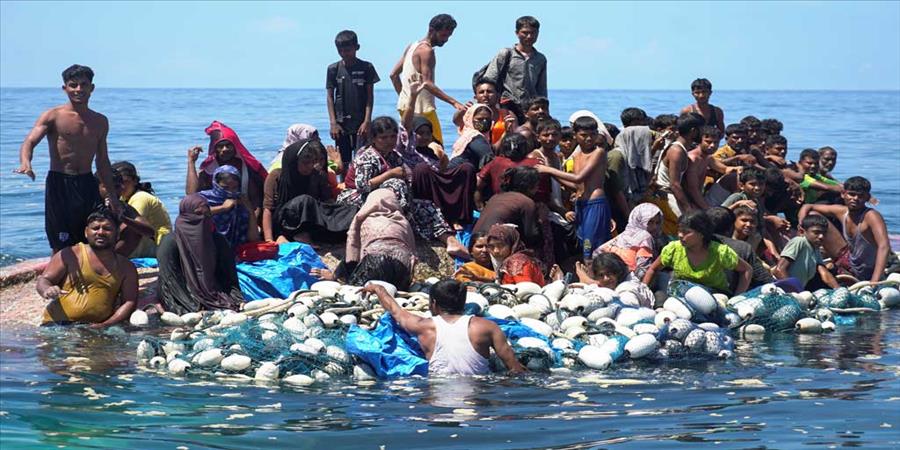
Güvenlik ve İstihbaratın Geleceği ile İlgili Senaryolar

Yazılım Sektöründeki Şirketlerin Yabancı Şirketlere Satılmasının İstihbarat ve Siber Güvenliğe Etkisi.

Videolar
Video-Üçüncü Dalga Terörizmin Öteki Yüzü: PKK Terör Örgütü
Tüm Videolar İçin Tıklayınız

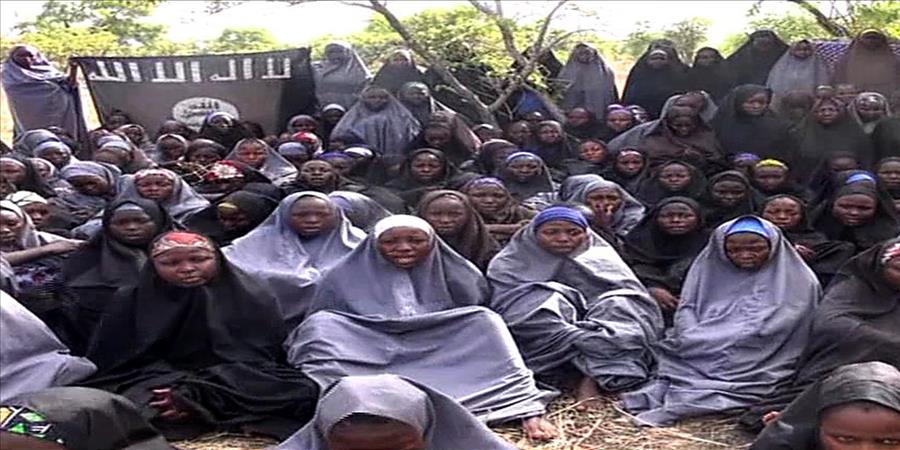
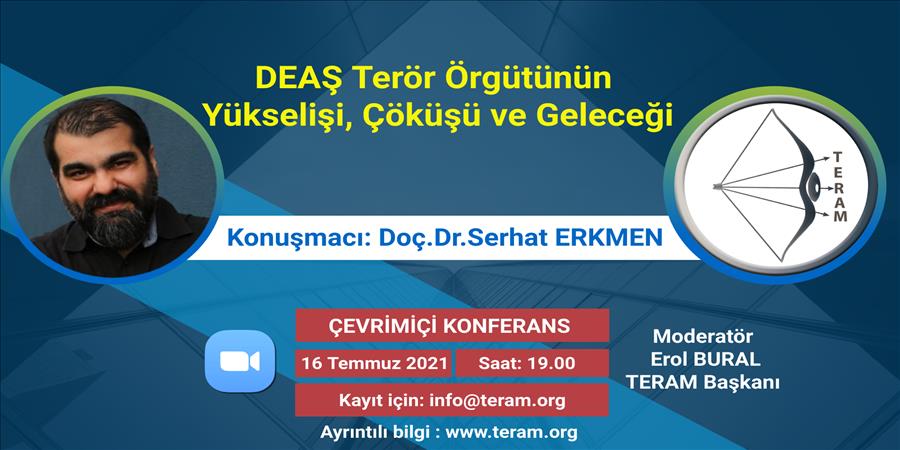
.jpg)
